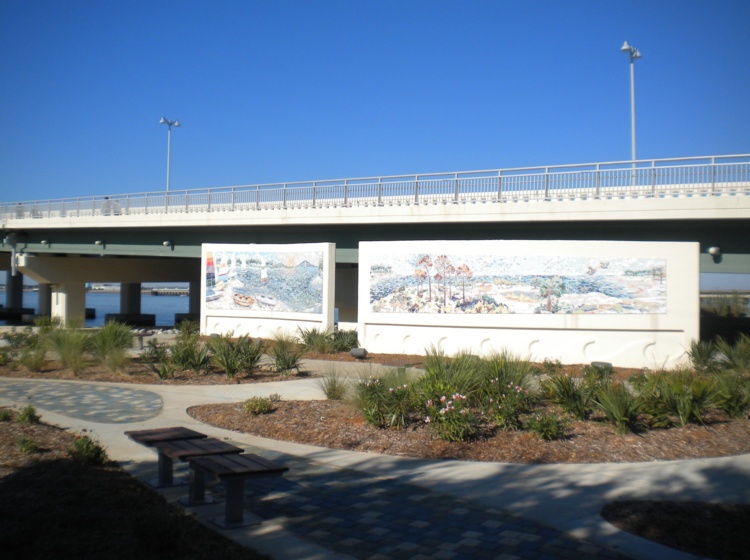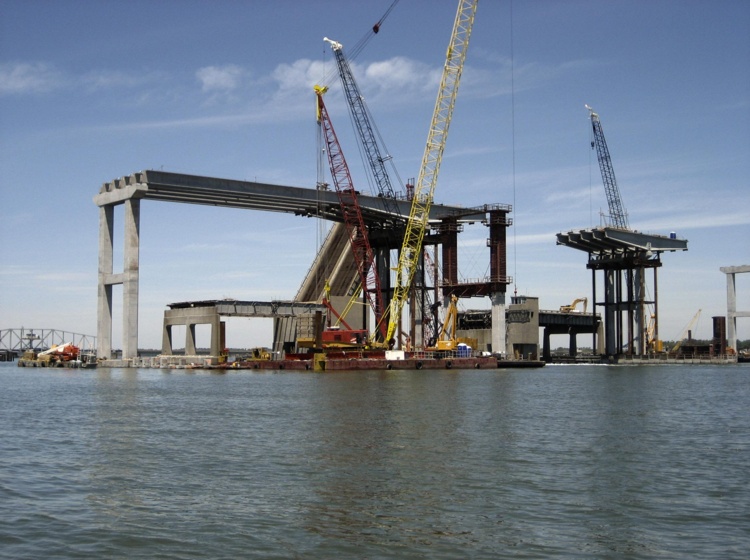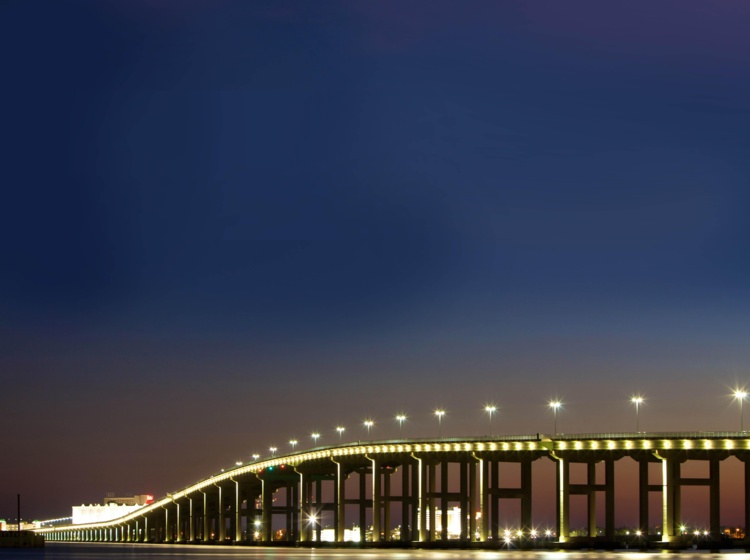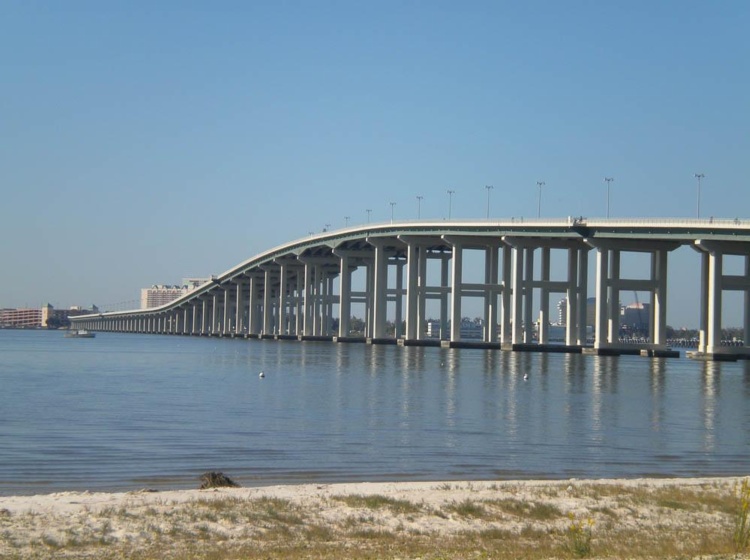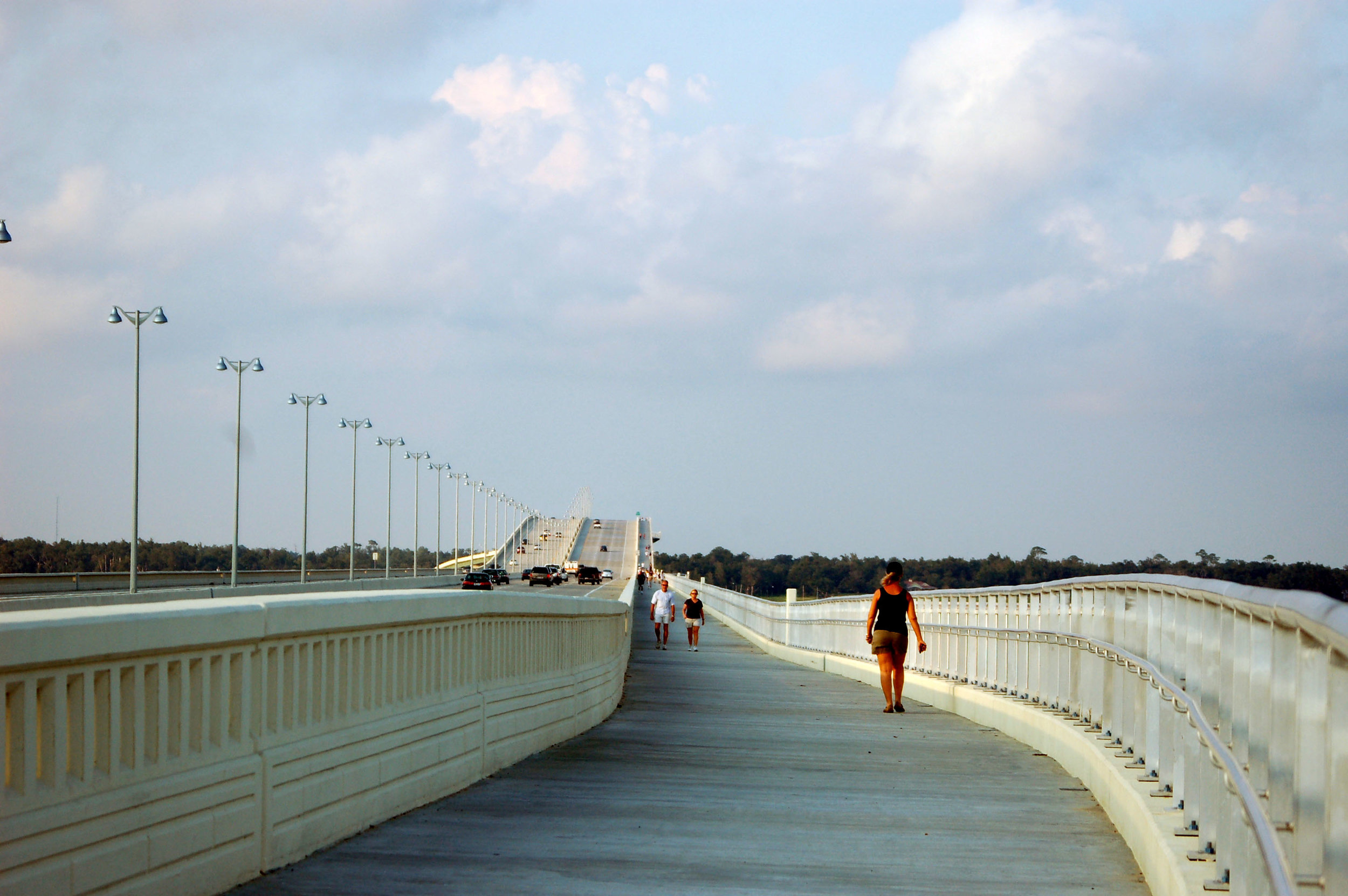Biloxi Bay Bridge
Gulf Coast Prestress
Location:
Mississippi Department of Transportation
Biloxi, MS
Schedule:
Project Start Date: 2006
Project Completion Date: 2008
Cost:
Total Project Cost: $339 million
Length: 8,766 ft
Deck Area: 1,110,359 SF
Companies Involved
Precast Concrete Producer
Gulf Coast Prestress
494 N Market Street
Pass Christian, MS 39571
http://www.gcprestress.com/home.html
Architect
Touchstone Architecture
755 Grand Boulevard
Miramar Beach, FL 32550
https://www.touchstonearchitecture.com/
Precast Concrete Specialty Engineer
Standard Concrete Products
945 Broadway
Columbus, GA 31901
http://www.standardconcrete.net/
Engineer of Record
Parsons Corporation
100 West Walnut Street
Pasadena, CA 91124
https://www.parsons.com/
General Contractor
Massman Construction
1000 Edwards Ave
Harahan, LA 70123
https://www.massman.net/
Background
In 2005, Hurricane Katrina destroyed the U.S. 90 Bridge over the Biloxi Bay, which connects the communities of Biloxi and Ocean Springs, Mississippi, carrying approximately 35,000 vehicles daily. The replacement project included new dual 1.6-mile-long bridges over the bay that carries three lanes of traffic in each direction and a shared-use path.
The project was designed to resist a Category 5 hurricane. The project was set on an accelerated schedule and was required to have one lane of traffic in each direction within 18 months and the total project to be completed within 22 months. The precast was erected in just 16.5 months and the entire project was completed in about 20 months, 1 1/2 months ahead of schedule. The bridge includes many aesthetic features such as colored concrete, open concrete traffic barriers, ornamental aluminum picket pedestrian railing, sidewalk overlooks with benches, and ornamental night accent lighting.
The new structure consists of a 250-foot navigation span comprised of precast bulb-tee girders that vary in depth from 12 feet at the piers to 6.5 feet at mid-span. The approach spans consist of prestressed bulb-tee girders with span lengths of 85 feet to 150 feet. The piers are subjected to vessel collision loads and are supported by waterline footings on 24-inch and 30-inch precast piles. Precast components included 1,700-plus 18-, 24- and 30-in. square piles
2011 PCI Design Award Winner:Best Bridge with a Main Span over 150 Feet
Challenges
As a post hurricane project, the underwater debris including pieces of the original structure where in the project area below the proposed structures. Due to the accelerated schedule, the design had to work around the debris so the precast components could be installed early. The debris was removed after the project was already started.
Once post hurricane projects were advertised and awarded, the precast industry along the Gulf experienced a massive surge in work. While this was welcomed by producers, there was a potential for delays in schedules and inabilities to meet the demand. The design compensated for this by limiting the amount of specialty precast components used in the design, thus allowing for more precast producers to be involved in the process.
With a wide range of geometric and load conditions, the design team was tasked with developing an approach that was both economical and addressed the bridge’s specific design needs. The piers varied in height from 1.8m to 27.4m. The design allowed for an assembly-line type approach that minimized the form work and equipment needed.
Key Attributes
Designed to resist a CAT 5 Hurricane.
Bulb-tee girders create 250-foot navigation span
Precast erected in 16.5 months
Biloxi Bay Bridge Damage from Hurricane Katrina
Biloxi Bay Bridge After Construction




